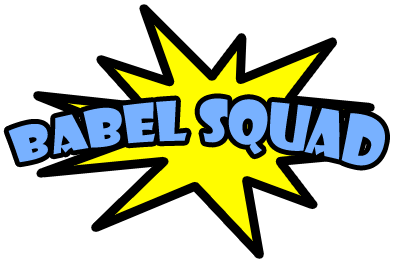Introduction
Artificial speech is a way of teaching through a collection of constructed situations with little or no diversity. Early language instruction usually relies on artificial speech because it gives the student consistency. In this way, students learn examples that rarely translate into the lives of native speakers. The key to truly mastering a language lies in being able to formulate and understand natural speech. The problem lies in that natural speech, while identified as an extremely important part of teaching a language, is extremely difficult to convey to a student.
The objective of this project is to create a Web 2.0 portal that will give students the opportunity to learn about naturally spoken languages from a diverse set of people. This is done by using methods centered on a unique collection of videos of native speakers which our client, Dr. Karen Schairer, and will be accompanied by simple fun exercises to check for adequate understanding.
We have divided the requirements for the website into two sections. First, there are those for its users who must be able to create and edit their account, play a game and review their history. Secondly, there are those for its administrators who must be able to manage media content and site settings, create adventures, as well as track student progress.
Team Summary
- Richard Lester, Team Leader
- Travis Hudson, Client-side Developer
- Joe Flieger, Multimedia Developer
- Dean Dobransky, Client-side Developer
Problem Statement
Teaching natural language has been a problem with which a truly effective solution has evaded instructors for decades. Natural speech operates outside the confines of specific themes and vocabulary limitations. Its unpredictability and spontaneity leads to a language filled with pauses, false starts, blended words, varying velocity of delivery, and loose grammar. Removing these attributes from instructional videos helps to facilitate the understanding of the speakers to less experienced language learners. However, being able to understand these features are essential to a student's understanding of a language.
The client has an archive containing more than 250 videos of Spanish language natural speakers. These videos are the center of learning frameworks for teaching natural language. Through the years, the client has tried multiple technologies, ranging from HyperCard to the present VISTA system. HyperCard was one of the first hypermedia systems and existed before the launch of the World Wide Web. While easy to use, it has become technologically outdated for today's needs for e-learning. It was withdrawn from sale in 2004 and support had become sparse long before that.
On the contrary, VISTA is a more up to date and versatile system but is cumbersome to use. The client's main objection to the VISTA system is that changing even small details, such as static text, require a lengthy series of steps. Because of this, Dr Schairer now uses PowerPoint to model these frameworks. This allows lessons to be easily designed and widely distributed, but still leaves much to be desired. The purpose of this project is to use modern technology and the web to create a system that can be accessed from anywhere by anyone while still allowing for a large degree of creativity. Furthermore, the product should be easy to use for both administrators and users.
Main Problems
- Create a simple yet powerful adventure creation tool.
- Allow for the use of multiple methods of evaluation.
- Translate created adventures into a playable state for the users.
- Create a way to playback a conversation based a previous adventure's history and its recordings.
- Ensure that there is a low overhead for the end-user.
- Ensure that any base language text is systematically replaceable to allow for the addition of other languages.
